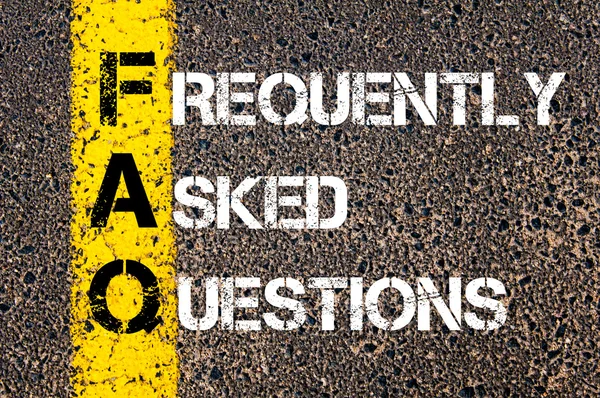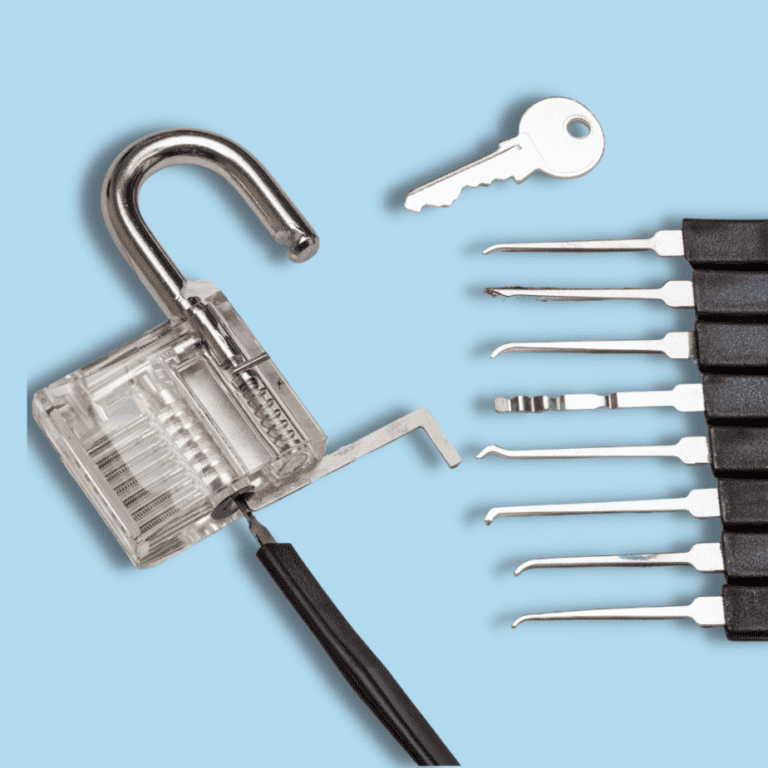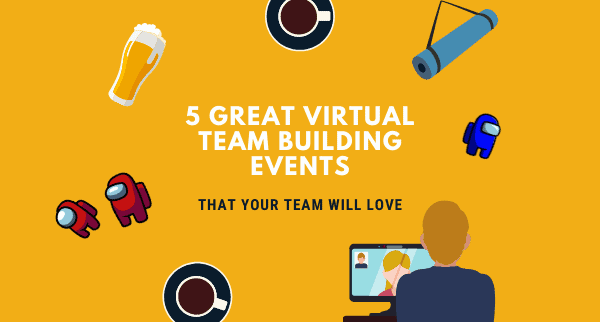Building a strong and efficient team is a critical aspect of any successful business.
It involves far more than assembling a group of talented individuals; it requires careful cultivation, fostering an atmosphere of trust, mutual respect, and shared goals.
This comprehensive guide outlines the key steps to build a robust team, from setting clear expectations to fostering diversity and trust within your team.
It also offers valuable insights into the stages of team development and introduces a variety of engaging team-building activities that can help your team connect and collaborate more effectively.
With these strategies, you can create a high-performing team that can communicate, cooperate, and innovate, driving your business towards success.
Defining Your Objectives
Having a transparent, tangible target is pivotal to achieving what you set out to do.
A clearly outlined goal gives a team direction and purpose, providing a benchmark against which progress can be measured.
This is a critical first step in any planning process, setting the foundation for all actions that follow. Without a clear goal, it becomes challenging to align team efforts or evaluate success.
Whether you’re looking to improve productivity, launch a new project, or reshape your company culture, it all begins with a defined, measurable objective.
Building a Strong and Efficient Team: More Than Just Hiring Well
Top executives often boast about hiring the best talents and letting them loose.
Yes, recruiting the right individuals forms a key part of building a strong and efficient team. Delegating tasks for increased autonomy does indeed motivate.
But that’s only the tip of the iceberg.
Managing a team is not a cakewalk. Leaders need to actively ensure the team harmonizes well and keeps the correct priorities in check.
Building a strong team culture isn’t about magic.
There are six impactful drivers, applicable to any organization, whether housing five members or a staggering 500,000.
Charting a Clear Course

Remember how children often question their destination on long drives?
Similarly, team members need clarity.
They need to know, “What’s the end goal, and how do we measure our progress?”
It sounds straightforward.
Yet, it’s one of the formidable hurdles teams and companies often stumble upon. What’s the face of success? What yardstick will measure this team’s success by?
Confusion often sprouts when leaders juggle five or even eleven priorities.
Identifying these priorities and measurement tactics is paramount.
It’s the team leader’s crucial role, as most tasks flow from these goals.
Like a carefully planned rocket launch, even minor miscalculations can lead a team astray.
The journey of building a strong and efficient team requires precision and clear foresight.
Building a Strong and Efficient Team with a Collective Scoreboard
The beauty of a simple plan lies in its ability to unite.
It counters the various human beings’ tendency to form cliques.
Take a football team, for instance. It has various “tribes”—offense and defense, linemen and receivers, to name a few.
But a clear goal, tracked by an external scoreboard, fosters a stronger sense of team unity, overshadowing any “us vs. them” dynamics.
In a landscape devoid of shared metrics, people craft their own success metrics, leading to constant bickering.
They end up disputing over scoring systems, not real progress.
It’s all counterproductive when building a strong and efficient team.
The Broken Record Syndrome…But It’s Worth It
Once you’ve laid down a simple plan, repetition becomes key.
Reiterate your priorities even when it feels like you’re stuck on repeat. People often need multiple iterations to genuinely remember something.
Building a strong and efficient team sometimes means sounding like a broken record, but it’s a tune worth playing.
Building a Strong and Efficient Team: Establishing Road Rules
To build a strong and efficient team, you’ll need a framework of values and behaviors, acting as cultural guardrails. They ensure everyone knows how to cooperate effectively.
Crafting Your Team’s Culture

Families have values, albeit unspoken ones, guiding interactions and time spent.
It’s no different for teams.
Bring together a group, and they’ll create a unique culture.
As a leader, you can adopt a laissez-faire approach, hoping for natural cohesion.
Alternatively, you can initiate shared guidelines to shape the work environment.
Creating a team’s cultural values doesn’t follow a strict playbook.
Sometimes, the company’s founder has ground rules and sets them. At other times, it’s a bottom-up effort led by employees.
Building a Strong and Efficient Team: Upholding Cultural Values
The crucial element is practicing stated values, not just performing a hollow exercise. Promoting those who flout these values contradicts the mission.
Avoid these pitfalls:
Don’t overcomplicate. Most people can retain three items daily.
The list needn’t cover all human behaviors. Concentrate on aspects human behavior unique to the group that keep everyone aligned and progressing.
Be specific, not vague.
Broad values like “excellence” or “integrity” might sound appealing, but they’re prone to varied interpretation.
When building a successful business with a strong and efficient team, clarity takes precedence.
Building a Strong and Efficient Team: The Power of Respect
A lack of respect can hamper motivation, causing team members to hold back their best ideas and efforts.
The Fallout from Ineffective Leadership

We’ve all encountered a poor boss, often characterized by not listening, micromanaging, a lack of trust, treating employees as mere tools for their goals, blaming others, taking credit for team wins, or public humiliation.
This treatment puts employees on the defensive, making them leave part of their identity at the door.
It can stifle creative or unconventional ideas out of fear of dismissal. In such a culture, innovation becomes arduous, if not impossible.
Embrace Transparency and Sensitivity: Understand Your Team’s Unspoken Emotions
As a leader, it’s essential to embrace an ethos of openness and sensitivity, setting a positive precedent for the entire team.
Pay close attention to the unspoken emotions that often play a crucial role in the dynamics of your team. Be perceptive and aware of their feelings, moods, and the undercurrents of their interactions.
This level of emotional intelligence in leadership not only helps in diffusing potential conflicts before they escalate, but it also fosters a work environment where employees feel heard, understood, and valued.
By tuning into these emotional cues, you help establish a robust team culture that thrives on mutual respect and empathetic understanding.
Establishing a Respectful Tone
Leaders play a critical role in setting a respectful tone and exemplifying behaviors to emulate.
Any instances of gossip or disrespect—toward superiors, subordinates should be swiftly addressed.
Building a strong and efficient team starts with a strong foundation of respect.
Approach each team member’s contributions with an open mind.
Every idea holds potential, regardless of its initial appearance.
Remember to never dismiss an idea as “stupid” or unworthy.
Creativity can often be found in the most unexpected propositions.
Fostering a culture that values all suggestions encourages ongoing innovation.
Remember, the next breakthrough could come from a notion initially perceived as unconventional.
By valuing each employee’s ideas, you instill a sense of worth and motivation in your team.
This approach not only helps generate a steady stream of fresh ideas but also promotes a more inclusive and respectful work environment.
Building a Strong and Efficient Team: Accountability Matters
A robust and effective team is the result of strong teams and everyone delivering on their individual responsibilities.
Responsibility is a Two-Way Street
Mutual respect and accountability form the core of effective teamwork.
Leaders of successful teams should be clear about their expectations for each team member’s contributions while also ensuring a respectful environment.
Many organizations emphasize a culture of responsibility and hold people accountable for their commitments.
Cultivating Open Dialogue

For a successful team, to thrive, tough conversations, though not always enjoyable, are essential.
Keep Within Your Boundaries
To facilitate open communication, managers must be prepared to address issues and misunderstandings that arise within their teams. T
Too often, such issues are ignored or postponed, leading to complications.
One effective approach to these conversations is to “stay on your side of the net”.
That is, to avoid making assumptions about someone’s motivations and focus solely on observed behaviors and your responses.
This method reduces the potential for defensive reactions.
The rhythm of providing feedback is just as vital as the manner in which it is given.
Scheduled and frequent feedback tends to lessen surprise and promotes a more open-minded attitude among team members.
An extended absence of feedback can give rise to unease among your employees.
However, once a consistent cycle of feedback delivery is established, employees become more accustomed to this practice, thus enhancing its effectiveness.
Beware of Email Misunderstandings

The impersonal nature of email communication can inadvertently harm team relationships.
Emails lack the context and tone necessary for clear communication, often leading to misinterpretations, heightened anxiety, and potentially hostile responses.
Many leaders implement email communication guidelines to prevent such issues.
A common rule is that a disagreement should not extend beyond two emails before moving to a phone call or face-to-face discussion.
A Step by Step Process on How to Build a Strong Team
Excelling teams aren’t born spontaneously.
They’re nurtured and shaped under the thoughtful leadership of someone with a strong sense of the team’s core values, objectives, and ethical guidelines.
Without this direction, your staff remain coworkers, not a cohesive, united team. Turning them into a true team rests on your shoulders. Here’s how to do it.
Set Clear Expectations Immediately
As a leader, set the tone from the start. Be clear about team objectives, expected behaviors, and company culture. This early clarity allows members to quickly align their performance and adopt expected behaviors, facilitating a smooth integration into the existing team that’s dynamics.
Value Individuality Within Your Team
Every team member comes with unique experiences, skills, and perspectives. Valuing these differences fosters an environment of mutual respect and appreciation, thereby enhancing teamwork. Recognize each member’s unique contribution to create a positive and inclusive team culture.
Foster Interpersonal Relationships Among Team Members
Promote team cohesion by encouraging interpersonal relationships. Foster a culture of collaboration, where members view each other as partners rather than competitors. This approach nurtures a sense of camaraderie, enhancing collective productivity and problem-solving.
Prioritize Emotional Intelligence in Practice
Emotional intelligence is key in effective leadership. Acknowledge and respond to your team members’ feelings and needs, and encourage empathy among the team. A team leader attuned to their team’s emotional landscape fosters a positive and supportive work environment.
Inspire Your Team with Positive Encouragement
Use positive reinforcement to inspire your team. Celebrate achievements, big or small, and provide constructive feedback. A positive and encouraging environment can boost team morale, promote innovative thinking, and increase productivity.
Ensure Open and Constant Communication
Transparent and regular communication is crucial for team success. Share important updates, provide clear instructions, and be open to feedback. An environment where communication flows freely can prevent misunderstandings and facilitate alignment towards common goals.
Recognize and Reward High Performance
Recognize and reward team members’ efforts. Whether through monetary bonuses, public recognition, or increased responsibilities, rewarding good work boosts morale and motivates team members to maintain their high performance.
Cultivate Diversity Within the Team
A diverse team brings together various perspectives, fostering creativity and innovation. Strive to build a team with varied backgrounds, experiences, and complementary skills together. This diversity can enhance problem-solving capabilities and contribute to a more comprehensive understanding of your business landscape.
Develop Trustworthy Team Relationships
Build a great team with reliable and self-motivated individuals. Trusting your team members to make decisions and carry out tasks efficiently is fundamental to a well-functioning team. This trust encourages independence, promotes ownership, and contributes to the overall success of your team.
Building a Strong and Efficient Team: Frequently Asked Questions

What are the 5 stages of team building?
The five stages of team building, as proposed by psychologist Bruce Tuckman in 1965, are as follows:
- Forming: This is the initial stage where the team members are introduced. They learn about the tasks ahead, start to gather information, and handle the uncertainty of their role or the project. They are often polite and excited during this stage.
- Storming: During this stage, as team members start to express their individual perspectives, conflicts can arise. There can be power struggles or disagreements as individuals become more comfortable expressing their opinions. This is a crucial stage for the team’s growth, and successful navigation leads to stronger respect and trust among the members.
- Norming: By this stage, the team begins to resolve its conflicts and the members start to appreciate each other’s strengths. The team establishes norms about acceptable behavior, how to handle tasks, and what their collective goals are. Team cohesion increases and they begin to feel a strong sense of group identity.
- Performing: This is where the team is now effectively working toward the project goals in an efficient and motivated manner. The team members have understood and accepted their roles, trust each other, and can handle the decision-making process without a dependence on the team leader.
- Adjourning (sometimes called Mourning): This is the final stage where the project is coming to an end and the team members are parting ways. It can be a challenging phase as some members may feel insecurity or sadness at the project’s conclusion. Celebrating the project’s success as a team can help mitigate these feelings.
It’s worth noting that not all teams will go through each stage linearly. Some might revisit certain stages several times before progressing, and others might not experience every stage, especially if the project is short-term.
How can I be successful in team building?
Success in team building requires a strategic approach, clear communication, serious leadership skills and dedication to creating an environment where every team member feels valued and respected. Here are some tips on how to be successful in team building:
Understand Your Team
Start by knowing each member’s strengths, weaknesses, communication styles, and motivations. This understanding can help you assign tasks effectively and manage relationships within the team.
Set Clear Goals
A successful team has a clear understanding of what they are working towards. Make sure the team’s goals align with the organization’s objectives. These goals should be SMART: Specific, Measurable, Achievable, Relevant, and Time-bound.
Foster Open Communication
Encourage team members to share their thoughts, ideas, and potential solutions to problems. This can be done through regular meetings or creating an open and safe platform where everyone feels comfortable speaking up.
Build Trust

Trust is vital for a strong and cohesive team. It can be built through honesty, transparency, and by demonstrating reliability and consistency. Team members also need to feel trusted to make decisions and carry out tasks.
Celebrate Diversity
Every team member is unique, with different skills, experiences, and perspectives. Value this diversity as it can foster creativity, enrich discussions and lead to innovative solutions.
Encourage Collaboration
Promote a culture of collaboration rather than competition. Encourage team members to work together to solve problems and achieve common goals.
Resolve Conflicts Constructively
Disputes are inevitable in any team. Handle them constructively, allowing team members to express their disagreements, find common ground, and reach a resolution.
Recognize and Reward
Acknowledge your team’s efforts and achievements. Recognition can boost morale, increase motivation, and enhance job satisfaction.
Invest in Team Building Activities
These can help break down barriers, improve relationships, and promote a better understanding amongst team members. See our below section on ideas for great ideas to help build a successful team.
Provide Resources and Training
Equip your team with the necessary tools and training to perform their tasks effectively. This also shows that you’re invested in their personal development and growth.
Remember, building a successful team doesn’t happen overnight. It takes time, patience, and commitment. But the payoff—a motivated, cohesive, and productive team—is well worth the effort.
Building a Strong and Efficient Team: What are 5 team building activities I can host today?
We’ll focus on virtual activities here, as this will enable you to build a strong team even though you may have a geographic variety to include in your team development.
Virtual Lock Picking Class

This unique and thrilling activity can bring out your team’s problem-solving and critical thinking skills. Professional instructors can guide your team through the process of picking different types of locks. It’s a great way to challenge your team, promote collaboration, and offer a fun, shared experience.
Click here to learn more about virtual lock picking classes.
Virtual Coffee or Tea Tasting

A virtual coffee or tea tasting can be a delightful and relaxing event for your team. An expert can guide your team through the tasting process, explaining the distinct flavors and origins of different varieties. This activity can also provide an opportunity for casual conversations and bonding.
Click here to learn more about coffee tastings and here for tea tastings.
Virtual Latte Tasting

Exploring the subtleties of taste that different types of milk bring to lattes can be a delightful, enriching experience. In a virtual latte tasting, your team will have the opportunity to taste lattes made with three different types of milk, each lending a unique flavor profile to the drink. Guided by a coffee expert, team members can learn to identify the nuances in flavor and texture each milk variant brings to the table. This activity not only provides a sensory treat but also fosters a shared experience and conversation among team members.
Click here to learn more about latte tastings.
Virtual Happy Hour

This is a simple yet effective way to foster connection and boost team morale. Virtual happy hours provide an opportunity for team members to wind down, share a drink, and engage in light-hearted conversations outside of work topics. To make it more interactive, consider including icebreaker games or themed dress codes.
Click here to learn more about virtual happy hours.
Online Team Quizzes or Trivia

An online trivia or quiz session can be a fun and engaging activity. It can be based on general knowledge or customized to include questions related to your industry, company, or team members. This game encourages teamwork, learning, and healthy competition.
Click here for more info on Quizbreaker.
Remember, the goal of these activities is to encourage team members to interact, collaborate, and get to know each other better, thereby strengthening team cohesion and enhancing overall productivity.



